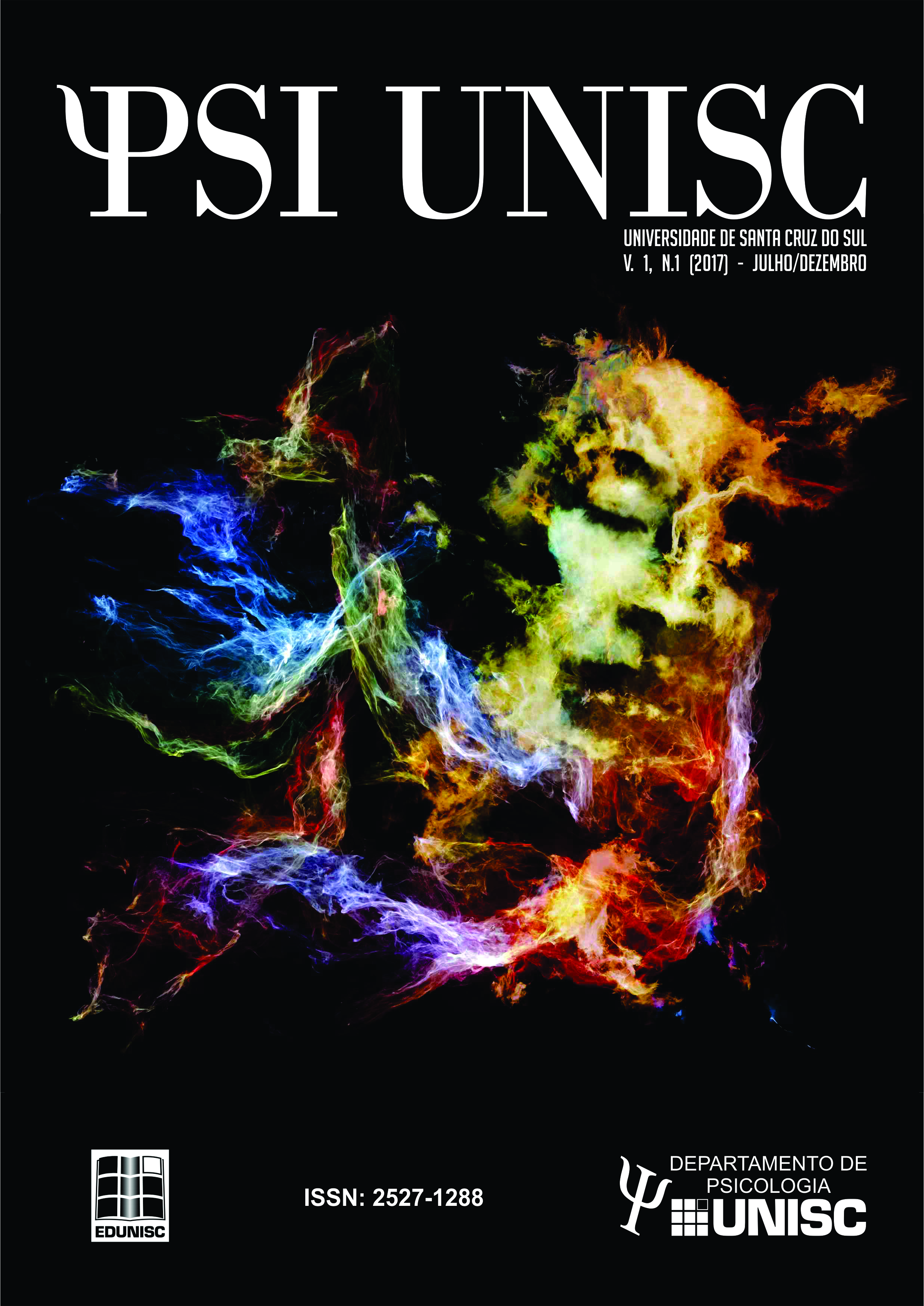Quality of life of elderly practitioners and non practitioners of physical activities
DOI:
https://doi.org/10.17058/psiunisc.v1i1.9783Keywords:
Old age. Quality of life. Physical activity.Abstract
This study aimed to evaluate the quality of life and the importance given to physical activity of the elderly. The study was a descriptive, cross-sectional quantitative design. The sample consisted of 52 elderly of both sexes participating and non-participating in Physical Activity groups. The instruments used were the WHOQOL-BREF and a closed questionnaire. Comparisons of the areas of quality of life between age groups were analyzed using the Kruskal-Wallis test, and between sex and physical activity using the Mann-Whitney test. The results marked the sample with an average of 74.2 years, represented with 92.2% female. On the Quality of Life there is a predominance of psychological domain 79.1%, followed by the social sector, with 76.3%, environmental and physical domain, com 69,4% and 69.0%, respectively. Considering the results of the variable physical activity was no significant difference between the average of the areas between those who practice or no physical activity. Thus, actively participate in a group had a positive influence on the old assessment on their quality of life as it provides a social support and help to strengthen the sense of personal worth.Downloads
References
Bittencourt, Z. L. C., & Hoehne, E. L. (2006). Qualidade de vida de deficientes visuais. Medicina, 39(2), 260-264.
Fleck, M. A. (2008). Problemas conceituais em qualidade de vida. In: Fleck, M. A. A avaliação de qualidade de vida: guia para profissionais da saúde (pp. 19-28). Porto Alegre: Artmed.
Garcia, J. L., Dalano, C. L., Borragine, S. O. F., & Brito, C. A. F. (2009). Atividade física intencional e sua influência na Qualidade de Vida: desafios para o profissional de Educação Física. Revista Digital EF deportes, 14 (137).
Godia, A. P., Quadros, T. M. B., Vilela Junior, G. B., Souza, E. A, Cabral, C., Morais, T. B. et al. (2007). Comparação da qualidade de vida de mulheres idosas praticantes e não praticantes de exercício físico. Revista Digital EF deportes, 11(106).
Gonçalves, A., & Vilarta, R. (2004). Qualidade de vida e atividade física: explorando teorias e prática. São Paulo: Manole.
Mazo, G. Z. (2008). Atividade física, qualidade de vida e envelhecimento. Porto Alegre: Sulina.
Minayo, M. C. S., Hartz, Z. A., &Buss, P. M. (2000). Qualidade de vida e saúde: um debate necessário. Revista Ciência e Saúde Coletiva, 5(1) 7-18.
Moura, M. M. K.,& Barcelos, A. R. G. (2012). Qualidade de vida em adultos deficientes visuais. FIEP Boletim On-Line. 82 [Special Edition - Article I].
Nahas, M. V. (2003) (3) Atividade física, saúde e qualidade de vida: conceito e sugestões para um estilo de vida ativo. Londrina: Midiograf.
Neri, A. L. (2001) (2) Desenvolvimento e envelhecimento: perspectivas biológicas, psicológicas e sociológicas. Campinas, SP: Papirus.
OMS (2005). Envelhecimento ativo: uma política de saúde. Brasília: Organização Pan-Americana da Saúde.
Okuma, S. S. (2009) (5). O idoso e a atividade física. Campinas, SP: Papirus.
Paschoal, S. M. P. (2006). Qualidade de vida na velhice. In: Freitas, E. V. Tratado de Geriatria e Gerontologia (pp.147-153). Rio de Janeiro: Guanabara Koogan.
Pereira, R. J., Cotta, R. M. M., Franceschini, C. C., Ribeiro, R. C. L., Sampaio, R. F. & Priore, S. E. et al. (2006). Contribuição dos domínios físicos, social, psicológico e ambiental para a qualidade de vida global de idosos. Revista Psiquiatria, 28(1), 27-38.
Silva, M. P., Santos Filho, J. A. A., & Gobbi, S. (2006). Aptidão funcional de mulheres idosas mediante programa supervisionado de atividades físicas generalizadas ou caminhadas regulares sem supervisão. Revista Brasileira de Atividade Física & Saúde, 11(2), 3-12.
WHOQOL Group (1998). Versão em português dos instrumentos de avaliação de qualidade de vida (whoqol). Departamento de Psiquiatria e Medicina Legal da Faculdade de Medicina da UFRGS.
Downloads
Published
How to Cite
Issue
Section
License
The submission of originals to this journal implies the transfer, by the authors, of the printed and digital publication rights. The copyrights for the published articles are those of the author, with periodical rights on the first publication. Authors may only use the same results in other publications clearly indicating this journal as the medium of the original publication. Because we are an open access journal, we allow free use of articles in educational and scientific applications provided the source is cited under the Creative Commons CC-BY license.




